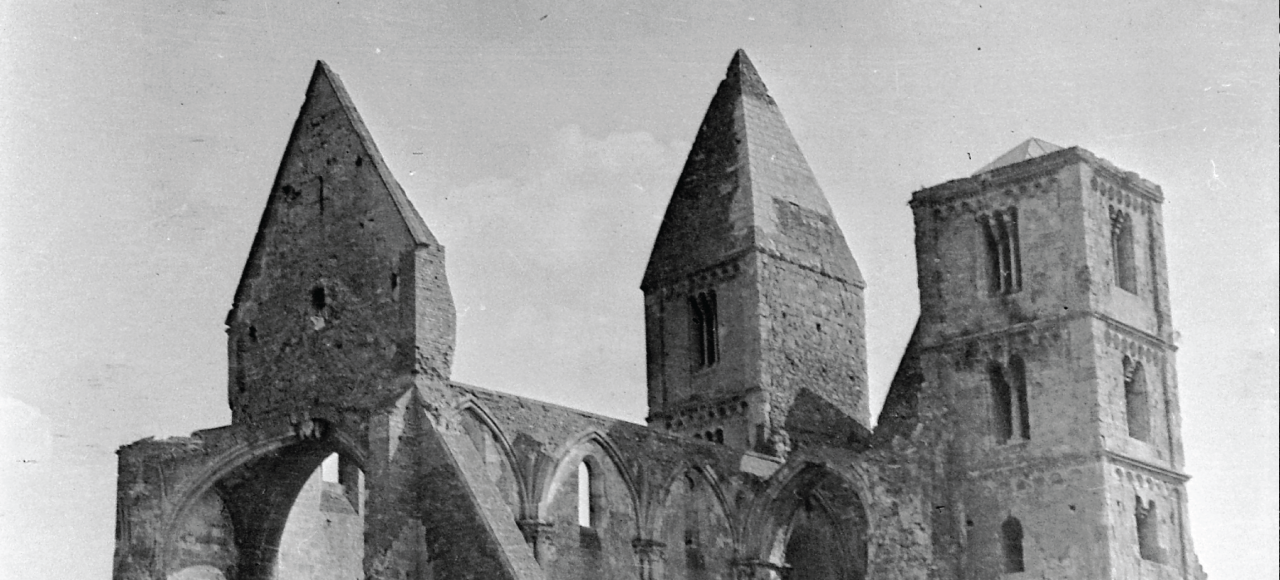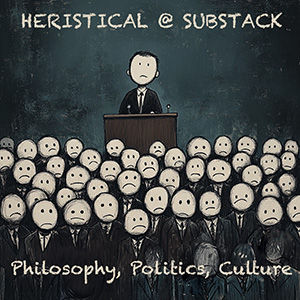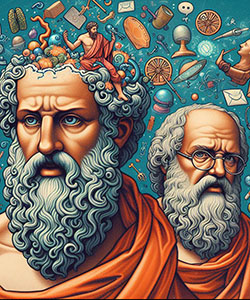
This summer I visited Rome for the first time. Like most visitors to the city I was keen to anchor my diffuse knowledge of ancient Rome by actually seeing the actual, real remains of the old city. I wanted a direct encounter that book learning could not give me. But as I wandered around the Colosseum and the imperial fora I was disappointed. Although the ruins were so stunningly numerous and rich, so generous in the detail they provided to the onlooker, I didn’t (of course!) find the real ancient Rome there. It seemed to me that it was more convincingly present in books that I had read. And indeed it seemed that “the real Rome” was doomed to be always elsewhere: when I am reading about it, I can imagine it lurking in fallen buildings, and when I finally get to see the fallen buildings, it runs coquettishly away back into the books. Freud reports a feeling of “derealisation” on seeing the Acropolis, and although he gives his own very characteristic Freudian explanation for this, invoking his personal biography, I suspect that his feeling was very much like mine, and that the kind of disappointment I felt is not at all uncommon.
My disappointment was inevitable because my desire to encounter “the real thing” was inchoate and absurd. Apart from anything else, I was making the physical a kind of talisman for the real. I wanted a broken marble column to present the reality of a lost civilisation to me with an immediacy that a sentence from Pliny, say, can make us yearn for but cannot itself supply. That is a lot to expect from stone.
However ill-defined it might be, this quest for “the real” is pervasive. Tourists are notorious for it. At its most discreditable, it is the quest for the real, authentic culture and traditions of a region, a demand which is profitably supplied by the provision of ersatz, commercially generated resemblances. But that particular anthropological quest is just one example of something more generic. What we are often trying to get hold of when we travel is “the real” itself. This imperative is made clear when we see tourists crowding around, say, Michelangelo’s Pieta, which can be barely glimpsed beyond its barriers and behind its bulletproof glass. I assume that excellent reproductions afford much better opportunities to explore it. But we want the real thing. The ancient Colosseum, too, can perhaps be better glimpsed in the CGI reconstructions of it that graced the film Gladiator. But we want the real thing.
How do we feel when we confront all this actuality? We are often frustrated. Looking is not enough. We want to have some satisfyingly full experience of the object in question. One of the things we want is to understand it, and looking at just a few of the synonyms for understanding gives a vivid insight into our anxious appetite for the real. To understand something is to comprehend it, and the archaic meaning of “comprehend,” – “to take together, to unite; include; seize” – meshes nicely with modern idioms: when looking at something with understanding, we “absorb” it; we “take it in.” We want to have it within us. Tourists taking photograph after photograph seem to be anxiously seeking and failing to reassure themselves that they have absorbed into themselves and now truly possess some iconic bit of reality. Just looking thoughtfully at an object has not given them what they need, so they apprehend it in a purely mechanical way, perhaps with some hope that future looking, at the acquired image, will provide the assimilation that has thus far eluded them.
I didn’t bring a camera on holiday with me, so my own attempts to master a sense of separation from the real involved touching. Where signs did not forbid it, I put my hands on things of beauty or interest that I saw in an attempt to “grasp” them – to experience them more fully, to register my encounter with them more securely.
And that brings me to St Peter’s toes. In St Peter’s Basilica in the Vatican, there is a bronze statue of St Peter, at least 700 years old, possibly much older. He is shown giving a blessing and holding the keys to the kingdom of heaven. Several of his toes have been worn to flatness by pilgrims over the centuries touching (and kissing) the statue. Pilgrims were the tourists of their day and they are numerous among today’s tourists in Rome. It is interesting to consider the possibility that pilgrims and (other) tourists have a motivation in common. Both groups are seeking a satisfying encounter with “the real.” You could argue that pilgrims are lucky, because they have a relatively clear idea of what this yearned-for absolute is: it is God, conceived as (something like) a universally underlying entity, from whom all particular existences are emanations. And pilgrims have a rich and beautiful set of images and stories that help them to conceptualise an encounter with it. The loss of innocence at the Fall begins our human career as exiles from the presence of the absolute; Christ’s exclamation “Wherefore hast thou deserted me?” is its tragic culmination, and his crucifixion is the means to its transcendence by all of us. The keys held by the bronze St Peter symbolise the possibility of a successful readmission to the presence of the absolute. When pilgrims touch St Peter’s toes they know what they want: they want him to endorse them and help them in their quest for entry.
Now, regardless of whether it is true or false, that Christian story (of a separation from God and of striving for a redemption that brings a new unity with God) seems to map onto a form of human yearning, a sense of exile and incompleteness that is in some sense prior to religion and can be experienced in a secular fashion. If the Christian story is false (and there is no God, no separation from him, and no reunification either), then pervasive belief in that story cannot be explained by reference to it’s being true, and might well instead be explained in terms of this prior human yearning and sense of exile or separation.
The most plausible explanation for this prior-to-religious sense of a fundamental separation that must be overcome is likely to be a psychological one. But there is one particular manifestation of a secular “yearning for the real” that probably has at least a degree of autonomy from psychological causes. It is our interest in philosophy. Speaking naively, the project of philosophy is to characterise the real, and in particular to give an account of reality that succeeds in overcoming the big mystery that our first forays into philosophy generate: namely, the mystery of how it is that we can have any knowledge of reality at all.
Those first, naive, forays into philosophy occur very naturally to us all, usually in childhood. How do I know if there is anything there at all, really? Am I the only mind? Do you see the same as me when you see something you call “yellow” or feel the same as I do when you feel something you call “pain”? These are intuitively compelling questions that lead us into an equally intuitive and compelling naive philosophical scepticism. As soon as we ask these questions we are cast into a kind of exile from the reality that we had previously been immersed in. Our confidence that we are apprehending reality is shaken. The task of philosophy then becomes the laborious business of rebuilding that confidence, overcoming exile, reuniting us with the real.
It does this either like St Peter by supplying keys of various elaborate sorts that allow passage between our humble consciousnesses and a transcendent reality, or (perhaps more respectably) by providing a critique of the naive questions (together with their naive answers) that prompted our scepticism in the first place. Wittgenstein offers such a critique. When he says that “philosophical problems arise when language goes on holiday,” he is referring to the fact that just as pilgrims and tourists, on their holy days and holidays, travel far afield to engineer an encounter with the real, philosophers (i.e. all of us, as soon as we ask those first naive questions) take language out of its home territory on a trip of a lifetime which is aimed at finding reality but in fact just problematises it in a way that generates the need for the kind of “therapeutic” philosophy that Wittgenstein practices, which largely involves taking language back home again.
Both religion and philosophy offer us ways of conceptualising and seeking to resolve a profound sense of exile or separation from reality, one that we also seek, rather blindly, to resolve in our daily life (including, in my case at least, when we travel as tourists). Whatever psychological causes there are for this sense of exile are supplemented by the genuine intellectual concerns that give rise to philosophy. Historically, religion has served both to soothe the psychological sources of perceived exile and to address intellectual concerns about the nature of reality and the place of our consciousness within it. Over the centuries, those intellectual concerns have been inherited by philosophy. But while philosophy is the place to look for answers, religion continues to give us a rich mythology of our quest to apprehend the real. And if the real seems to remain beyond our grasp no matter how hard we study, or how many photographs we take, or how many stones we touch, the Christian story and all of its rich imagery at least gives us the consolation of making our exile a thing of great beauty.
Claire Creffield is a freelance editor of academic books. Many years ago she was a prize fellow All Souls College, Oxford, working in philosophy.

